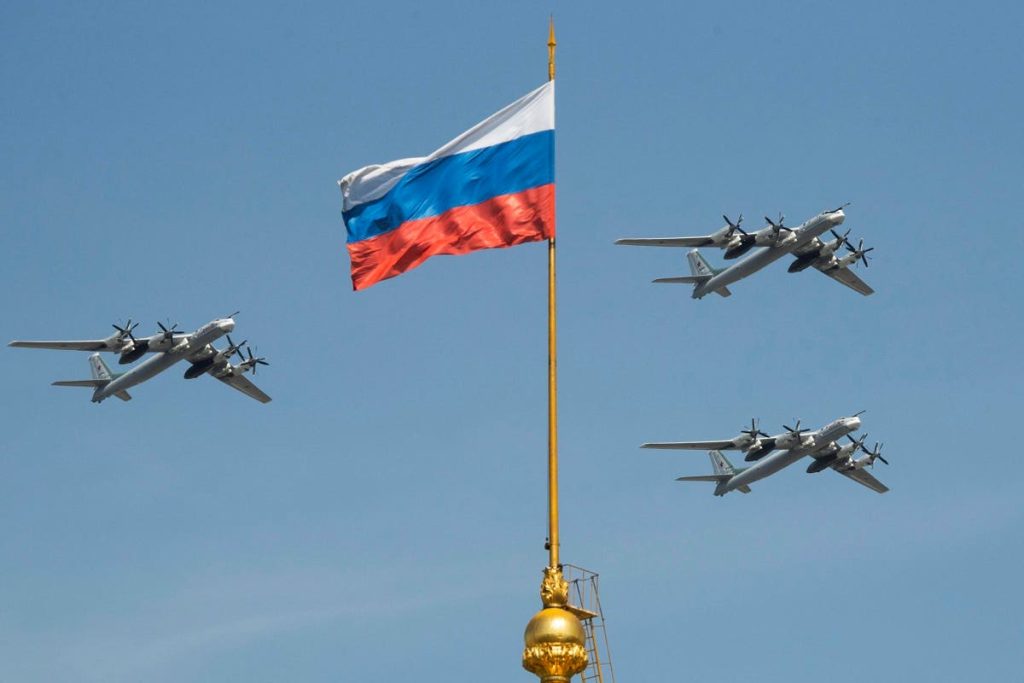Russian military airbases located far from the frontlines of the ongoing war in Ukraine have been increasingly targeted in drone attacks—and a number of the Kremlin’s aircraft have been destroyed on the ground. This weekend, the Russian Aerospace Forces apparently adopted a very “low-tech” solution, which involved employing old car tires on the wings and fuselage of its Cold War-era Tupolev Tu-95 (NATO reporting name “Bear”) strategic bombers.
Images of one of the aircraft covered with tires at the Engels airfield circulated on Sunday on X, the social media platform formerly known as Twitter.
This received mockery from Ukrainians and little commentary from the usually vocal Russian propagandists.
“Brace yourselves, because russians have once again showcased unparalleled innovation. What you are looking at is a satellite image featuring a TU-95 strategic bomber covered with car tires. According to them, this should protect strategic bombers from drones,” posted @Tatarigame_UA, who purported to be a Ukraine military officer.
Tatarigame_UA shared additional images, noting that it wasn’t a single occurrence, and suggested it was the Kremlin’s attempt to create a “budget-friendly version of ERA substitute”—a reference to explosive reactive armor that is employed to counter anti-tank weapons.
As another user also noted, “So, after his 4th bottle of Vodka, the Russian commander suddenly screamed—’Let’s use highly flammable car tyres to protect the bombers from drones.'”
“Amazing what desperate Russian General’s could conceive. Thinking rubber tires on top of Russian bombers would make Ukraine drones bounce off its target. OR Putin is a genius, making us think his Nuclear Bombers are part of a junkyard,” suggested @BobbyAlb.
The large Cold War-era strategic bomber was first flown in 1952, and it is now among the oldest aircraft designs still in service with the Russian military. The Tu-95 is also the only propeller-powered bomber in service anywhere in the world today. However, despite the age of the platform, it is a highly capable bomber—and much like the United States Air Force’s B-52 Stratofortress, it has been steadily upgraded and will likely remain in service well into the 2040s or later.
Armor Or Camouflage?
This is just the latest Russian ad hoc attempt to protect its military vehicles by covering them with readily available materials. Tank crews in Ukraine resorted to welding steel cages over the turrets to counter a threat from loitering munitions—also known as “kamikaze drones”—and by placing wooden logs on the sides of the tanks.
Though such low-tech solutions with tanks and other armored vehicles have been reasonably effective, the same can’t be said of simply placing tires on the tops of the bombers. However, is unclear if the tires were placed on the bombers to actually protect the aircraft from an attack, or if this is being employed as a way to conceal the aircraft at night, when most of the drone strikes have occurred.
In Crimea, the Russian Navy had painted the bow and stern of its Admiral Grigorovich-class frigates as the result of Kyiv’s repeated maritime drone strikes on the warships in port.
Of course, the fact that the images are circulating on social media of the camouflaged ships and aircraft has likely greatly diminished the effectiveness of such efforts to hide these platforms in plain sight!
Read the full article here









